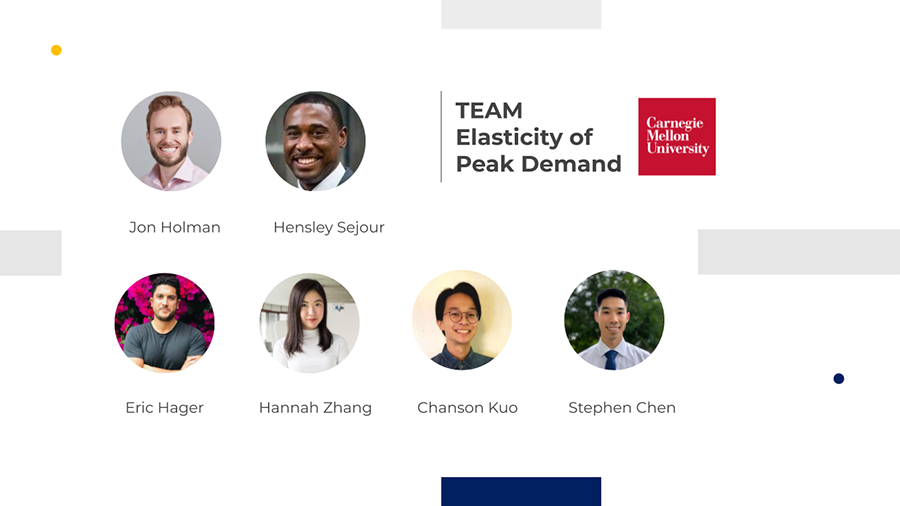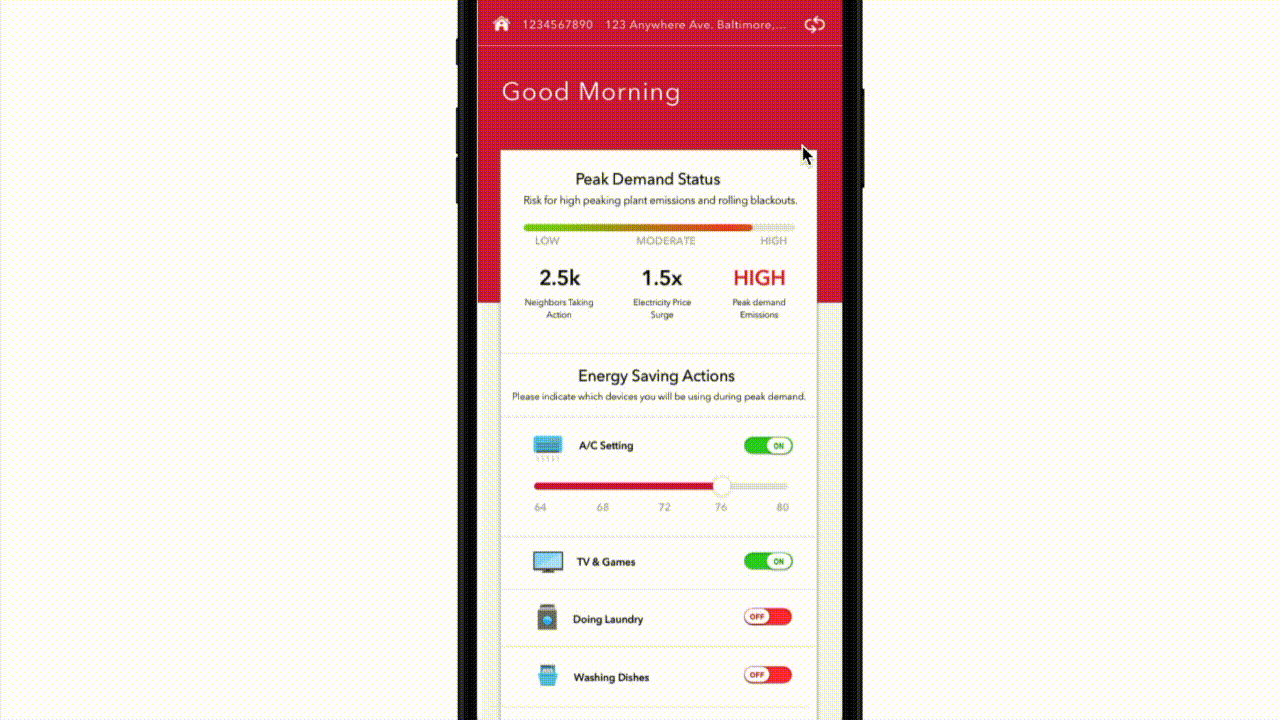
A Prize-Winning Solution at the Kellogg Design Challenge
By Elizabeth Donaldson
When Eric Hager and Chanson Kuo (MIIPS Advanced Study ’21) teamed up with Tepper School MBA students for the Kellogg Design Challenge, they expected to apply their design skills, collaborate on a solution, and connect with other students. After four weeks and three rounds of competition, they also wound up with a $12,000 first-place prize.
More than one-hundred other graduate student teams from across the country competed in a challenge hosted virtually by North Western University’s Kellogg School of Management and sponsored by Exelon. Each year, Kellogg invites students to apply human-centered design to solve a complex, customer-facing business challenge; this year, Exelon prompted participants to consider how the energy company could effectively engage with customers to drive down consumption during peak-demand times.
In hot summer months, many households run fans and air conditioners constantly, causing local blackouts by maxing out the power grid. The leadership at Exelon was interested in finding ways to engage with customers, encouraging them to avoid access consumption during peak-demands.
“Things were fuzzy on the front-end. It was a new team, so we were all figuring out where we fit and how we can optimize our skills,” says Hager. He’d met his MBA teammates at a Design and Business Club meeting, where he’d first learned of the Kellogg Challenge, and invited his classmate Kuo to join. In their diverse team, Tepper students helped product manage and operationalize while Hager and Kuo navigated problem-solving and design.
“Though we were only five weeks into the program, we knew how to interview, how to research, and how to design,” says Kuo, explaining the influence of courses like Product Design Fundamentals and User Research understood the innovation process.
As part of their process, the team surveyed nearly eighty people and interviewed twenty more. With a week left in the challenge, an MBA teammate connected the group to an energy regulatory for an interview that changed the course of the team’s solution.
“We thought we had a million-dollar idea. But after talking with an industry expert, we learned it wasn’t actually feasible,” says Hager. The industry-specific context helped form their new, award-winning solution: a push notification system for peak-demands, connected to the Excelon app. Hager had experience with user interface design and wireframes and focused his attention on developing a functional prototype.

Explore the team's prototype.
Meanwhile, Kuo, a former public speaking tutor, wrote the narrative of their process and the script for the team, telling the story of their research and solution.
“This wasn’t some science fair project, but a real product that could make a real difference,” Kuo shares. The pitch, shaped and written by Kuo, is a story of Amber Alert messages and how push notifications can inspire urgent, immediate action when designed thoughtfully. After their pitch, Exelon applauded the team for building a creative, customer-centric, and practical solution, and awarded them with the grand prize.
Though the other competition finalists presented thorough solutions, the Carnegie Mellon team had the creative edge, integrating business and design coursework and seeking additional guidance from MIIPS Program Director Ellen Ayoob and professor Laura Vinchesi.
“We’ve seen how innovation theories overlap in our classes, but during the Challenge, we really experienced,” Kuo says of the MIIPS product development method. “I think we owe our professors a beer—they weren’t kidding when they said this process works.”
In celebration of the team’s first-place prize: cheers to that!
